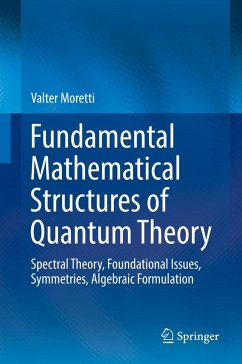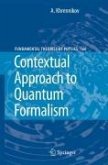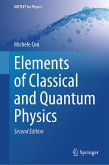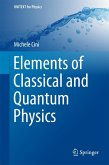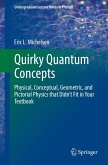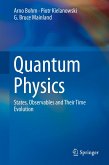Written in a didactic style, this book includes many examples and solved exercises.
The work is organized as follows. Chapter 1 reviews some elementary factsand properties of quantum systems. Chapter 2 and 3 present the main results of spectral analysis in complex Hilbert spaces. Chapter 4 introduces the point of view of the orthomodular lattices' theory. Quantum theory form this perspective turns out to the probability measure theory on the non-Boolean lattice of elementary observables and Gleason's theorem characterizes all these measures. Chapter 5 deals with some philosophical and interpretative aspects of quantum theory like hidden-variable formulations of QM. The Kochen-Specker theorem and its implications are analyzed also in relation BCHSH inequality, entanglement, realism, locality, and non-contextuality. Chapter 6 focuses on the algebra of observables also in the presence of superselection rules introducing the notion of von Neumann algebra. Chapter 7 offers the idea of (groups of) quantum symmetry, in particular, illustrated in terms of Wigner and Kadison theorems. Chapter 8 deals with the elementary ideas and results of the socalled algebraic formulation of quantum theories in terms of both *-algebras and C*-algebras.
This book should appeal to a dual readership: on one hand mathematicians that wish to acquire the tools that unlock the physical aspects of quantum theories; on the other physicists eager to solidify their understanding of the mathematical scaffolding of quantum theories.
Dieser Download kann aus rechtlichen Gründen nur mit Rechnungsadresse in A, B, BG, CY, CZ, D, DK, EW, E, FIN, F, GR, HR, H, IRL, I, LT, L, LR, M, NL, PL, P, R, S, SLO, SK ausgeliefert werden.
"The book can be read on the basis of an elementary knowledge of Hilbert spaces and measure theory. For mathematicians, it can be used as an introduction to Quantum Mechanics and a detailed guide to the associated mathematical problems; for the reader familiar with Quantum Mechanics, it provides an extensive insight into the mathematical discussion of its structural and foundational issues." (Giovanni Morchio, Mathematical Reviews, June, 2020)

